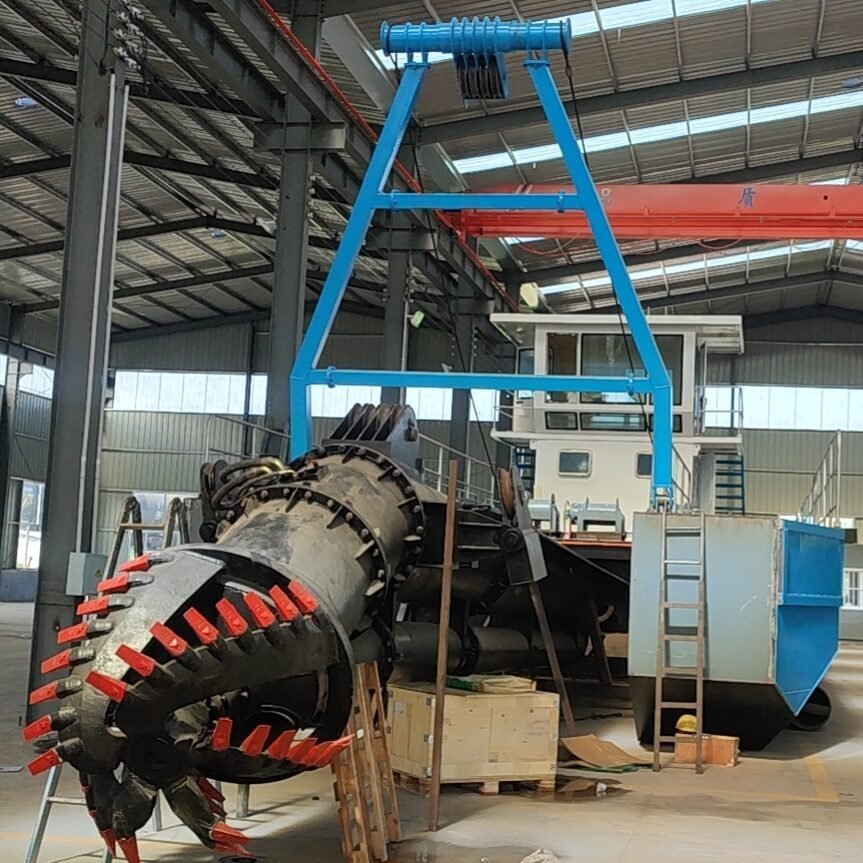
Keywords: Choosing a Dredger, Dredging Equipment Selection
Introduction to Dredger Selection
Selecting the right dredger for your project is a critical decision that can significantly impact the success and efficiency of your operation. With a wide variety of dredgers available, each designed for specific tasks and environments, making the right choice requires careful consideration of several factors. This article will guide you through the key factors to consider when choosing a dredger, helping you select the equipment that best meets your project’s needs.
Understanding Different Types of Dredgers
Before choosing a dredger, it’s important to understand the different types available and their respective applications. Each type of dredger is designed for specific tasks, environments, and material types.
- Cutter Suction Dredgers (CSDs): CSDs are highly versatile dredgers equipped with a rotating cutter head that loosens sediment before it is suctioned by a powerful pump. These dredgers are ideal for projects involving hard or compacted materials, such as clay, gravel, or rock. CSDs are commonly used for land reclamation, port construction, and deepening navigation channels.
- Trailing Suction Hopper Dredgers (TSHDs): TSHDs are designed for large-scale dredging projects, particularly those involving loose or soft materials like sand and silt. These dredgers feature suction pipes that collect sediment and store it in onboard hoppers. Once full, the hoppers transport the material to a disposal site or use it for land reclamation. TSHDs are often used for maintaining shipping channels and beach nourishment projects.
- Backhoe Dredgers: Backhoe dredgers are stationary dredgers equipped with an excavator arm and bucket. They are used for dredging hard materials, such as clay and rock, in confined or shallow areas. Backhoe dredgers are ideal for harbor maintenance, bridge construction, and other projects requiring precise excavation.
Factors to Consider When Choosing a Dredger
When selecting a dredger for your project, several factors must be considered to ensure it meets the specific needs of your operation.
- Type of Material: The type of material to be dredged is one of the most important factors to consider. Different dredgers are designed to handle different materials, from fine sand and silt to hard rock and gravel. For example, CSDs are well-suited for hard materials, while TSHDs excel at dredging soft sediments.
- Water Depth and Environmental Conditions: The depth of the water and the environmental conditions at the dredging site will influence your choice of dredger. Some dredgers are better suited for shallow waters, while others can operate effectively in deeper areas. Additionally, factors such as current, tides, and weather conditions may affect the performance of the dredger.
- Project Scale and Duration: The scale and duration of your project will also play a role in determining the most appropriate dredger. For large-scale, long-term projects, a high-capacity dredger like a TSHD may be necessary. Smaller projects with shorter timelines may require a more compact and easily transportable dredger.
- Mobility and Transportability: If your project involves multiple sites or requires frequent relocation of equipment, mobility and transportability are important considerations. Some dredgers are designed for easy assembly and disassembly, making them ideal for projects that move frequently. Others are more stationary and better suited for long-term operations in a single location.
- Budget and Cost Considerations: The cost of dredging equipment can vary widely, depending on the type and size of the dredger. It’s important to balance your budget with the need for high-quality equipment that meets the demands of your project. Consider both the initial purchase price and the long-term operating and maintenance costs when making your decision.
Maintenance and Operational Considerations
Proper maintenance and operation of your dredger are essential for ensuring its longevity and effectiveness. When choosing a dredger, consider the availability of spare parts, ease of maintenance, and the level of technical support provided by the manufacturer.
- Maintenance Requirements: Different dredgers have different maintenance needs. Some may require regular inspections and part replacements, while others are designed for low-maintenance operation. Understanding the maintenance requirements of your chosen dredger will help you plan for ongoing upkeep and avoid unexpected downtime.
- Operator Training: The complexity of the dredger and the skill level required to operate it should also be considered. Ensure that your team is adequately trained to operate the dredger safely and efficiently. Many manufacturers offer training programs and technical support to help operators become proficient with their equipment.
Conclusion: Making the Right Choice
Choosing the right dredger for your project is a crucial decision that requires careful consideration of various factors, including the type of material, water depth, project scale, and budget. By understanding the different types of dredgers available and evaluating your specific needs, you can select equipment that will maximize efficiency, minimize costs

No responses yet